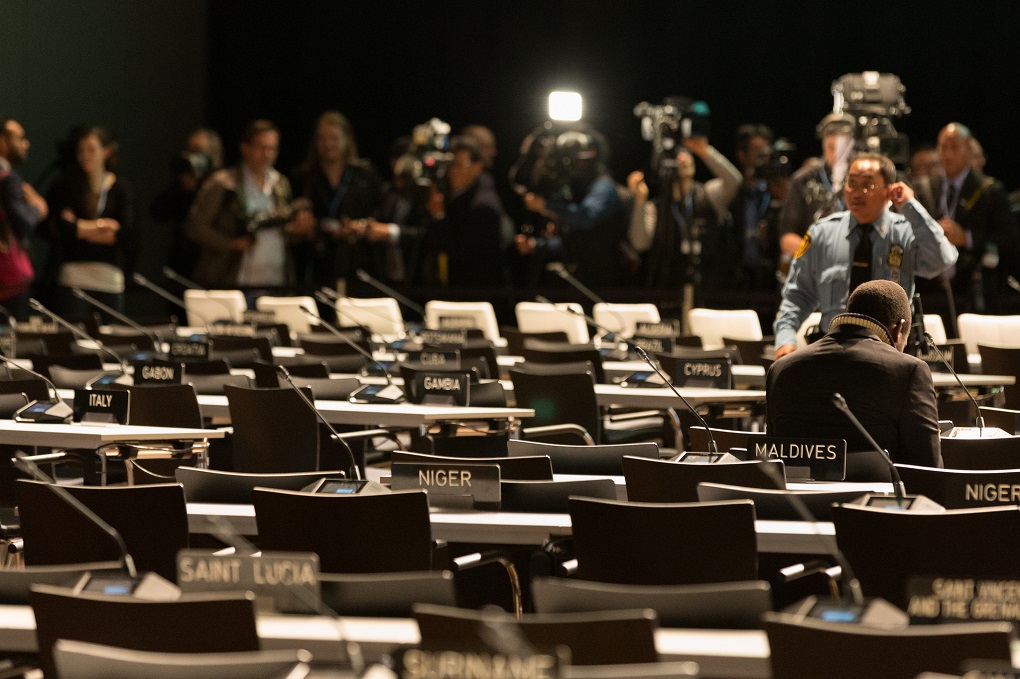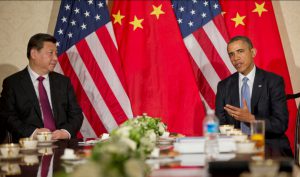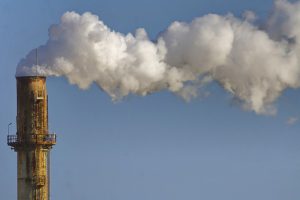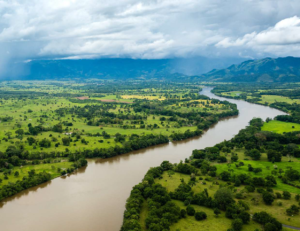Read in Chinese 中文版本
Germany, the European Union, Switzerland and Canada have all reiterated their commitment to increase financial help to developing countries to US$100 billion per year by 2020. But right now, the grants provided since this promise was first made in 2009 do not total much beyond US$45 billion, according to officials in the UN Framework Convention on Climate Change (UNFCCC) secretariat.
The figure given by developed countries is far higher, and some estimates put it at around US$90 billion. But analysts at the Climate Action Network (CAN) – the umbrella group of non-governmental organisations that track global climate negotiations – have calculated that around half the advertised amount is in the form of loans.
Considering that most of the extra greenhouse gases warming the atmosphere were put there by developed nations since the start of the Industrial Age, “this is like crashing into someone’s car, and then giving them a loan to pay for the repairs,” said a CAN member.
A recent joint report from the World Bank and its associates said they had collectively committed US$27 billion in climate finance last year. Of that, only 4% was in grant form.
Governments of some developed countries mention the total climate finance figure in public without mentioning how much of it is in the form of loans, but that can be seen in the biennial reports submitted to the UNFCCC secretariat. France reported that only 2% was provided as grants, Japan 5%, and Germany 45%. Norway, Sweden, Denmark, Switzerland and Canada are among countries that said their climate finance consisted exclusively of grants.
Given the historical responsibility of developed countries, the UNFCCC and the 1997 Kyoto Protocol are both based on the principle that providing finance to developing countries to combat climate change and deal with its effects is an essential aspect of global justice. Developing country governments and most NGOs have held this implies providing money in the form of grants and not loans.
The main opposition to this has come from the US, Japan, Australia and New Zealand, who point out that right now China is the world’s largest greenhouse gas emitter, and India the third largest. It was mostly due to this opposition that the principle of differentiation between developed and developing countries was largely ignored in the 2015 Paris climate agreement, though it was kept in the text.
Counting climate finance
An associated problem is the weakness of the UNFCCC system for defining, categorising, tracking, and evaluating climate finance. Other UN organisations such as UNDP and UNEP do not report their climate related activities to UNFCCC, which makes it even harder to figure out how much money is being spent where and for what. This is one of the important topics under discussion at this summit, but progress has been painfully slow.
Developed countries that give the money have always been keener to fund mitigation projects that would control greenhouse gas emissions, while developing countries want equal amounts for projects that help adaptation to climate change impacts. This tussle has seen the virtual death of the UNFCCC’s Adaptation Fund, which was given hardly any money for a long time. At the beginning of this summit, the German government announced a grant of 50 million euros to this fund. That will ensure its survival for another year.
Other funds – such as the Least Developed Countries fund, which is meant to help the poorest developing countries – are also in intensive care, as most of the money is going to the Green Climate Fund (GCF) instead. Many observers have welcomed this consolidation, preferring to see one major fund rather than many with little. But some developing countries are now complaining about the detailed and rigid processes of the GCF, just as they have done about the World Bank for years.
One genuine problem is that the GCF wants to see the extent of co-benefits before financing a project. If a developing country wants money to set up a solar farm, the GCF wants to know the volume of carbon emissions that will be saved by moving over from coal and oil. That is good on paper, but the really small developing countries are finding that their emissions are so small their proposals are being rejected. “We emit almost nothing. How much emission reduction can we show?” asked Thinley Lhamo, the head of Bhutan’s National Environment Commission, on the sidelines of the Bonn summit.
These are among the problems developing countries want to discuss as part of pre-2020 climate action (the Paris agreement only becomes operational in 2020).
India’s lead negotiator Ravishankar Prasad said: “The issue requires adequate space. We know we are developing guidelines for a global stocktake, transparency arrangements and implementation of nationally determined contributions. Information [on public finance provided by developed countries] is very relevant for developing countries as this would contribute to each and every agenda item listed under negotiations.”
Senior Chinese negotiator Chen Zhihua said this was a “life and death” issue for developing countries and would impact all other elements under negotiation in the Paris agreement.
But with developed countries opposing the inclusion of all pre-2020 action in the agenda of this summit, the issue is yet to be resolved. The facilitator of the finance discussions proposed that countries figure out modalities so that they could communicate finance information to the UNFCCC once every two years, but there is no consensus on this either. The United States delegate said, “No additional matters need to be addressed.”
This article was first published on The Third Pole









